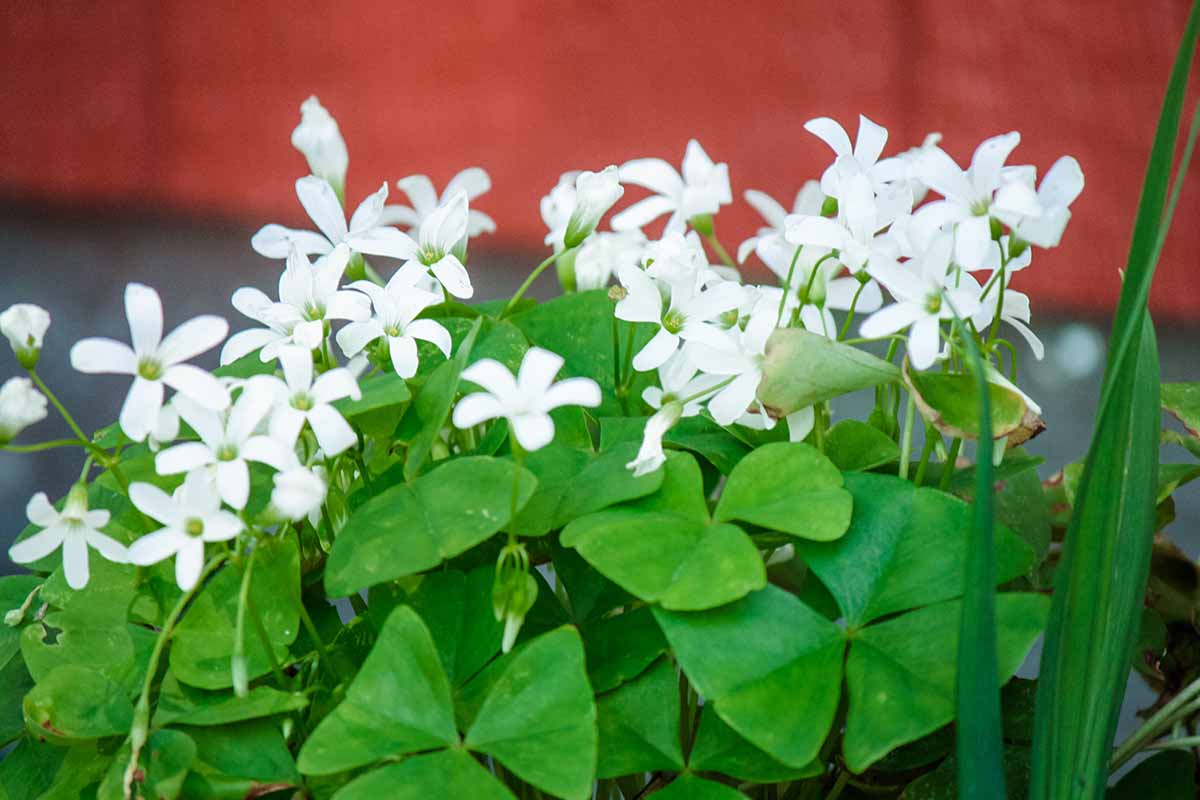
Source gardenerspath.com
Welcome to our guide on indoor shamrock plant care! If you’re a fan of lush green foliage and vibrant blooms, then the indoor shamrock plant is the perfect addition to your home. Known for its four-leaf clover shape and delicate appearance, the shamrock plant, also known as Oxalis, is a popular choice for both seasoned and beginner indoor gardeners.
In this comprehensive guide, we will explore the ins and outs of indoor shamrock plant care. From understanding the plant’s needs to troubleshooting common issues, we’ve got you covered. So, let’s dive in and learn how to keep your indoor shamrock plant thriving and looking its best!
The Basics of Indoor Shamrock Plant Care
Choosing the Ideal Location for Your Shamrock Plant
The first step in successful indoor shamrock plant care is finding the perfect spot for your plant to thrive. Shamrock plants prefer bright, indirect sunlight. They are most comfortable in temperatures between 60-75°F (15-24°C), making them well-suited for indoor environments. When selecting a location, it’s important to avoid placing your shamrock plant in direct sunlight, as this can scorch its delicate leaves.
If you’re wondering where to place your shamrock plant, consider areas such as a north-facing window or a few feet away from a south-facing window. These locations provide ample light without subjecting the plant to direct sun rays. Remember to monitor the light levels and adjust as needed to ensure your plant receives the optimal amount of light.
Watering and Humidity Needs of Shamrock Plants
Watering is a crucial aspect of indoor shamrock plant care. These plants prefer evenly moist soil, but they don’t appreciate sitting in waterlogged conditions. Overwatering can lead to root rot, so it’s essential to strike the right balance.
One way to ensure you’re watering your shamrock plant properly is to stick your finger about an inch into the soil. If the top inch of soil feels dry, it’s time to water. When watering, pour water at the base of the plant until it drains out of the bottom. Allow any excess water to escape and empty the saucer, if used, to prevent water from pooling.
Fertilizing and Propagating Shamrock Plants
Providing Nutrients to Your Shamrock Plant
While shamrock plants don’t require frequent fertilization, feeding them occasionally can help promote healthy growth. Use a balanced, water-soluble fertilizer specifically formulated for houseplants. During the growing season (spring to fall), fertilize the plant every 4-6 weeks. Be sure to follow the instructions on the fertilizer packaging and avoid overfertilizing, as it can cause salt buildup in the soil.
Propagating Your Shamrock Plant through Division
One of the joys of indoor shamrock plant care is the ease with which these plants can be propagated. The most common method of propagation is through division. To propagate your shamrock plant, follow these steps:
- Carefully remove the plant from its pot, ensuring you don’t damage the roots.
- Gently separate the rhizomes into smaller sections, making sure each division has healthy roots and foliage.
- Plant each division in separate pots filled with well-draining potting soil.
- Water the new divisions thoroughly and place them in a location with bright, indirect sunlight.
Table Breakdown: Shamrock Plant Care Schedule
| Month | Watering | Fertilizing | Pruning |
|---|---|---|---|
| January | Once a week | Omit | Trim yellowing leaves |
| February | Once a week | Omit | Trim yellowing leaves |
| March | Once every 10 days | Omit | Trim yellowing leaves |
| April | Once every 10 days | First application of fertilizer for the year | Remove dead flowers and trim yellowing leaves |
| May | Once every 10 days | Omit | Trim yellowing leaves |
Frequently Asked Questions about Indoor Shamrock Plant Care
Q: How often should I water my indoor shamrock plant?
A: Water your shamrock plant once the top inch of soil feels dry. The frequency may vary depending on factors like temperature, humidity, and potting mix, but aim for approximately once a week.
Q: What should I do if my shamrock plant’s leaves are turning yellow?
A: Yellowing leaves can be a sign of overwatering, underwatering, or inadequate light. Evaluate the watering and lighting conditions, and adjust as necessary to provide the ideal environment for your plant.
Q: Does my shamrock plant require pruning?
A: Shamrock plants benefit from light pruning to remove yellowing or dead leaves. Additionally, if the plant becomes leggy or starts to lose its shape, you can trim it back to encourage bushier growth.
Q: Can I place my shamrock plant outside during warm months?
A: Yes, shamrock plants can be placed outdoors during warm months, provided they are not exposed to direct sunlight. Gradually introduce them to outdoor conditions to prevent shock, and bring them indoors before the temperatures drop below their preferred range.
Q: Is the shamrock plant toxic to pets?
A: Yes, shamrock plants contain oxalate crystals, which can be toxic to pets if ingested. Keep the plant out of reach of curious cats and dogs, and consider opting for pet-friendly houseplants if you have furry friends at home.
In Conclusion
With a little care and attention, growing an indoor shamrock plant is a rewarding experience. By understanding the plant’s needs for light, water, and nutrients, as well as practicing propagation and proper pruning, you can enjoy a lush and vibrant shamrock plant in your home. Remember to be mindful of the specific requirements of this unique plant, and soon, you’ll have a stunning display of clover-shaped leaves to brighten up any room.